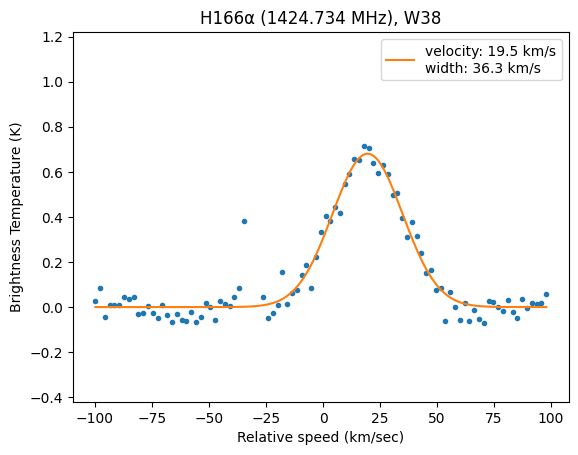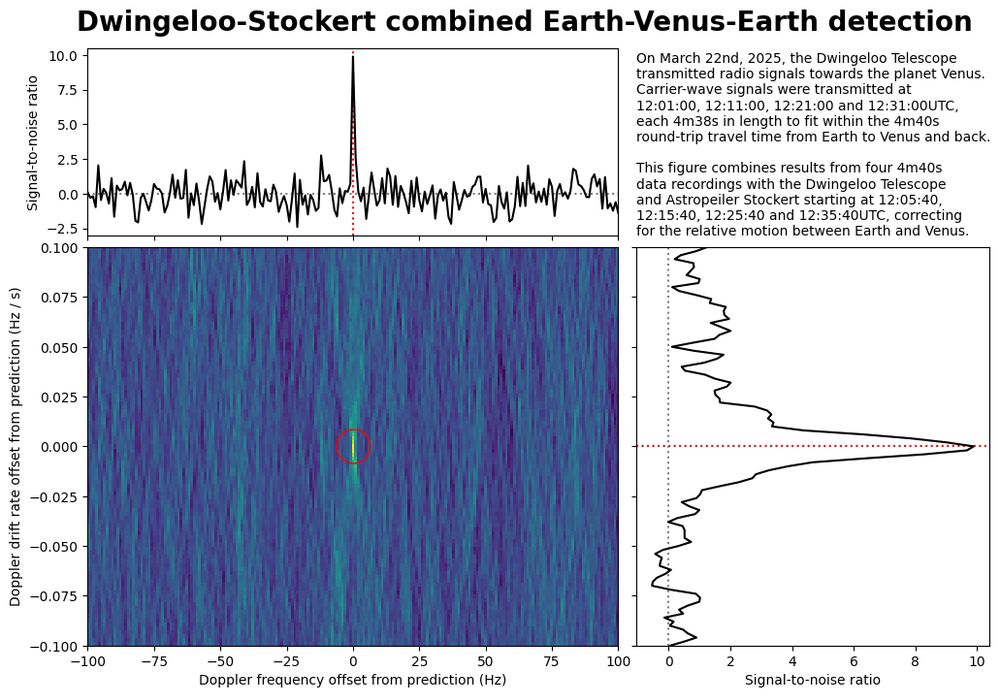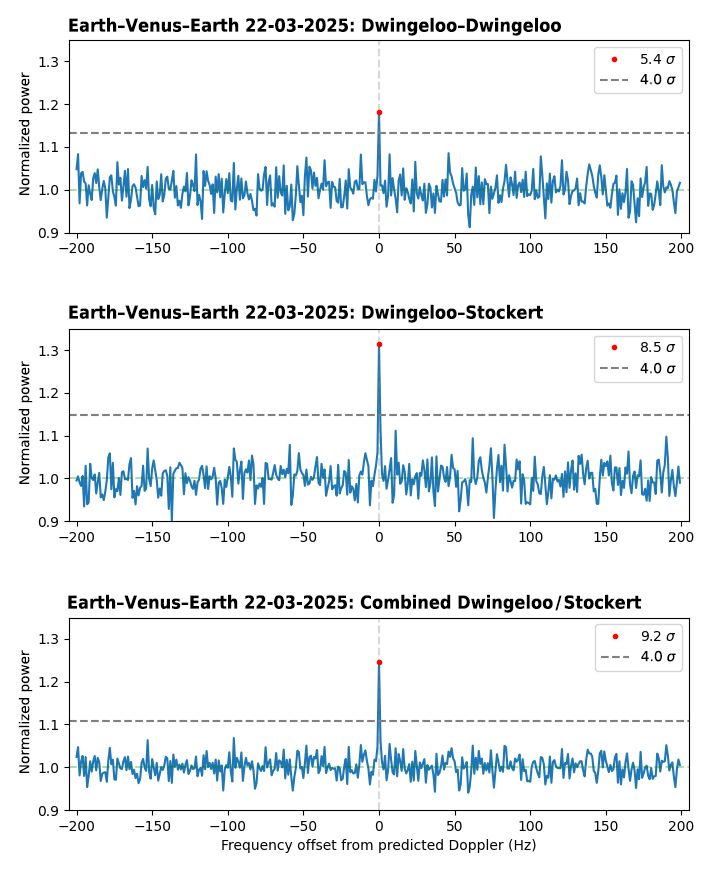
H116⍺ RRL as measured in Dwingeloo.
Measuring Radio Recombination Lines (RRL) with the Dwingeloo telescope (@radiotelescoop.bsky.social), in the Omega Nebula (M17/W38).
25.05.2025 14:08 — 👍 6 🔁 3 💬 1 📌 1@tammo80.bsky.social

H116⍺ RRL as measured in Dwingeloo.
Measuring Radio Recombination Lines (RRL) with the Dwingeloo telescope (@radiotelescoop.bsky.social), in the Omega Nebula (M17/W38).
25.05.2025 14:08 — 👍 6 🔁 3 💬 1 📌 1On the occasion of the @unesco.org International Day of Light, we created a 'light painting' using the Dwingeloo Telescope by mounting a light bulb at the focus for half an hour. #lightday2025 @idlofficial.bsky.social
16.05.2025 06:55 — 👍 64 🔁 25 💬 2 📌 5Great work! This is why we put our IQ on the web :)
One remark on why Dwingeloo is less sensitive: we have a relay in front of the first LNA, because Dwingeloo also transmits in experiments like this one. Apart from that, we may also need a better LNA.

A bit late, but here is some additional analysis of the Earth-Venus-Earth radar experiments with @radiotelescoop.bsky.social from March 22nd, 2025. It takes the 4 recordings at the Dwingeloo and Stockert telescopes and searches in Doppler frequency and Doppler rates for the radar reflections.
10.04.2025 19:26 — 👍 15 🔁 5 💬 2 📌 0
Graphs showing EVE detections: 5.4 sigma for Dwingeloo-Dwingeloo, 8.5 sigma for Dwingeloo-Stockert, 9.2 sigma for combined Dwingeloo/Stockert
We used the historic Dwingeloo telescope to bounce a signal off the surface of Venus, and receive its echo! This marks only the second time that amateurs have achieved an 'EVE' (Earth-Venus-Earth) bounce. Venus was about 40 million kilometers from Earth.
www.camras.nl/en/blog/2025...